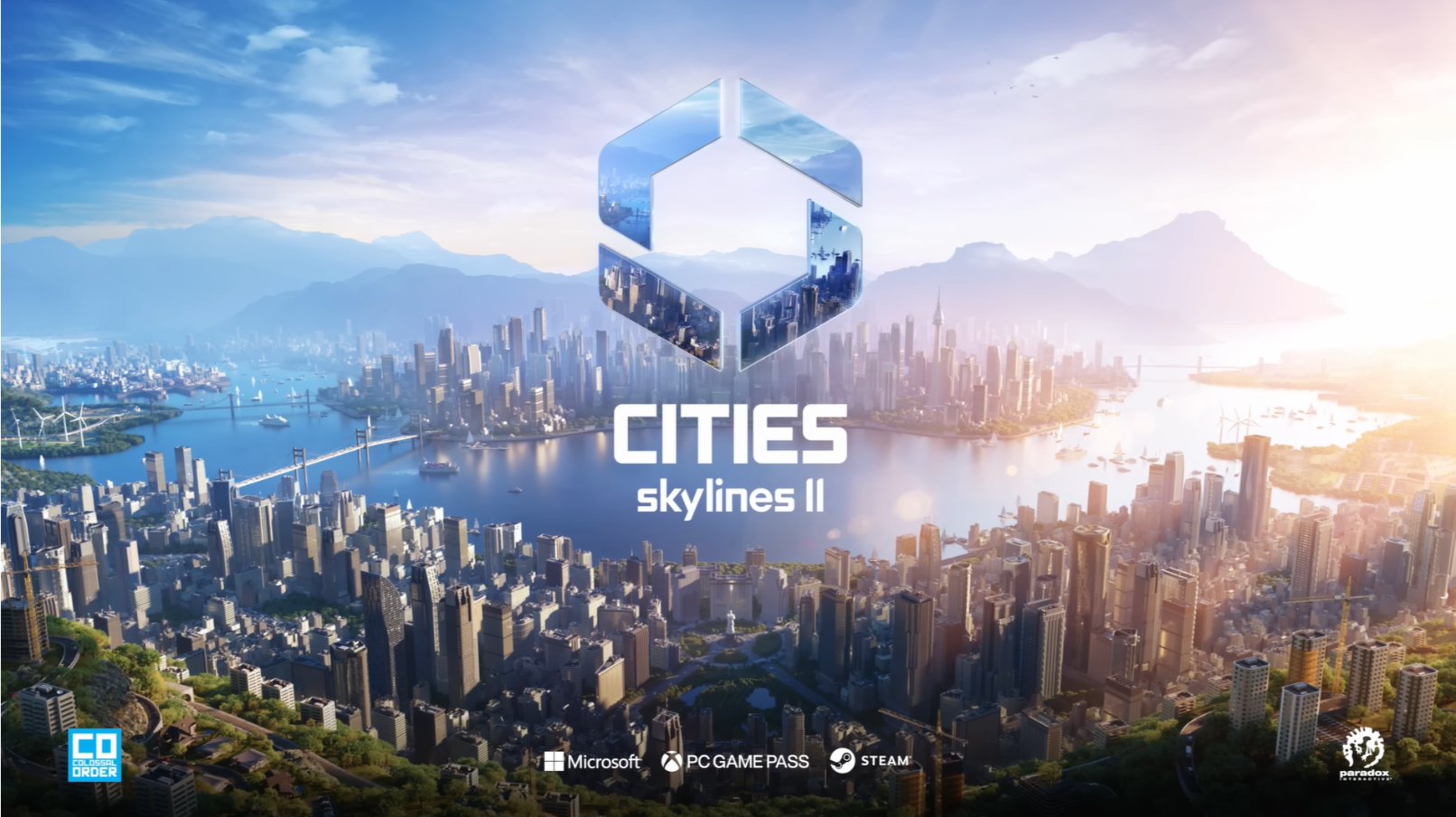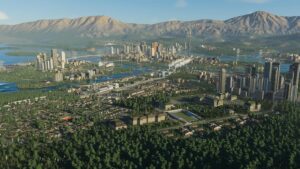Dive into Cities: Skylines II, the revolutionary city-building sequel. Released on October 24, 2023, for Windows (console versions coming soon), this game by Colossal Order and Paradox Interactive transforms urban development.
1. The Evolution of City Building
Embark on a city-building journey with enhanced features like improved traffic AI, expanded city sizes, and a sophisticated management system. Cities: Skylines II transforms virtual landscapes into sprawling metropolises, giving players unprecedented creative expression.
2. Designing Your Realm
With a virtual plot awaiting your touch, unleash your creativity. Skylines II goes beyond structure placement, delving into city growth influence through policies, tax rates, and ordinances. Every decision resonates in the fabric of your evolving metropolis.
3. Vast Horizons Beckon
A key feature of Skylines II is liberation from spatial constraints. The game offers a staggering 441 tiles, turning your realm into a sprawling metropolis. Compared to the predecessor’s 33.1776 km², Skylines II opens up 171.33 km², each tile a realm of possibilities.
4. Population Dynamics Unleashed
In this sequel, the population isn’t just a statistic; it reflects your city’s vitality. Unlike its predecessor’s limitations, Skylines II allows for a limitless population, where each city can thrive with up to 2 billion citizens.
5. Embracing Seasons and City Dynamics
Skylines II introduces weather and seasonal changes, adding a cyclical nature to city life. Winter brings snow-laden streets, while summer ushers in floods and tornadoes. Disaster management becomes crucial, with strategic placement of response facilities.
6. Evolution of City Services
Beyond erecting buildings, Skylines II weaves a tapestry of services catering to citizens’ needs. From safety services to nuanced elements like telecommunications, upgrading facilities allows organic expansion.
7. Transportation Refined
Transportation becomes a nuanced experience with intelligent citizen navigation based on factors like cost and comfort. Skylines II enhances flexibility, allowing seamless importing and exporting between virtual cities.
8. The Birth of Skylines II
Revealed on March 6, 2023, Skylines II promised a richer, more immersive experience. The development journey, though encountering delays, underscores a commitment to quality over rushed releases.
9. Modifications and Creative Expression
Skylines II embraces user modifications, opting for the Paradox Mods library for cross-platform support. The shift opens new avenues for modders to alter behavior, introduce maps, and enhance assets.
10. Critical Acclaim and Player Sentiments
Post-release, Skylines II faced scrutiny, reflected in mixed Metacritic scores. However, player sentiments vary, with praises for the game’s improvements and potential longevity.
11. Addressing Performance Concerns
Some players voiced concerns about game optimization. However, adjusting settings and exploring platforms like GeForce Now can enhance the gaming experience.
12. Looking Ahead: Future Patches and Content
Acknowledging performance concerns, the developers assure a series of patches to refine gameplay. The game’s longevity is further supported by planned content expansions.
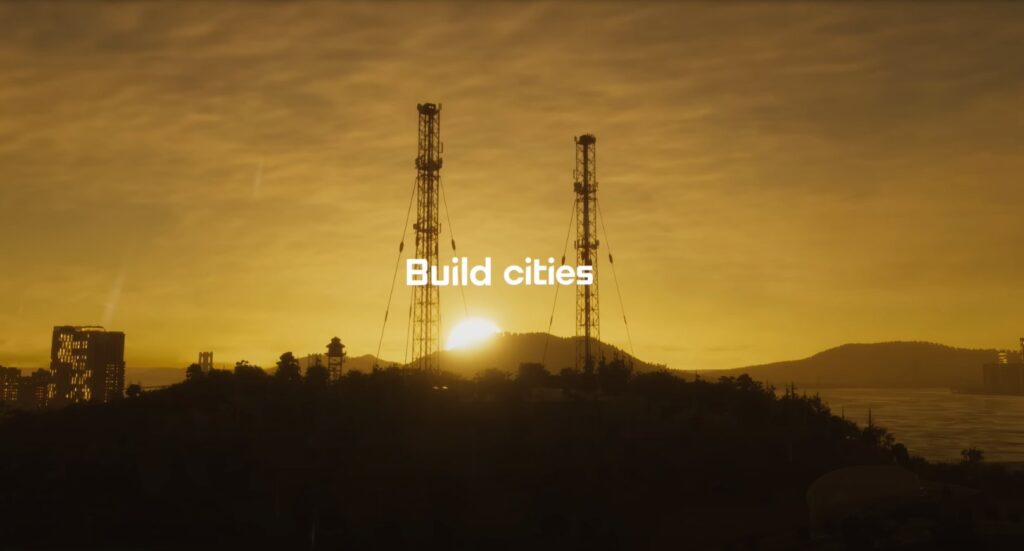
1: Introduction to Cities: Skylines II
Cities: Skylines II, the 2023 sequel to the beloved city-building game, is your ticket to a virtual urban adventure. Developed by Colossal Order and published by Paradox Interactive, it builds on the success of its predecessor while introducing exciting new features.
Embarking on the Skylines Journey:
Launched on October 24, 2023, for Windows (with plans for PlayStation 5 and Xbox Series X/S in Q2 2024), Skylines II has received both praise and criticism. While critics applaud its engaging gameplay, there’s some flak for its demanding performance requirements and technical hiccups.
Crafting Your City:
Just like in the original Cities: Skylines, Skylines II lets you play the role of a city planner. You’re given a virtual space to shape – roads, zones, utilities, and city services are your tools to attract residents and businesses. Tax rates and policies, like in real cities, influence growth and fund your city’s expansion.
Unlimited City-Building Potential:
Unlike its predecessor’s nine-tile limit, Skylines II opens up vast possibilities with 441 tiles, allowing you to create a sprawling metropolis. The once-restricted population of 65,000 is now limited only by your computer or console specifications. It’s your canvas to build, experiment, and challenge yourself.
Weathering the Seasons:
Skylines II introduces a dynamic weather system, impacting your city with seasonal changes. From snowfall to summer storms, you’ll need to adapt and plan for disasters. Disaster response facilities become crucial to weather the challenges and keep your city thriving.
Services and Upgrades:
Skylines II goes beyond basic city management. It introduces an array of services – not just the essentials like police and fire stations but also telecommunications, welfare, and death management. Upgrading existing facilities becomes part of the strategy for a well-functioning city.
Transportation Evolution:
Transportation becomes more intelligent in Skylines II. Simulated citizens consider factors like route length, costs, comfort, and agent preference for their commute. Services like police and fire stations can be assigned to specific districts, improving response times and overall efficiency.
The Skylines II Odyssey:
Unveiled on March 6, 2023, Skylines II promised an enhanced experience. However, the journey to launch wasn’t without bumps. Initially planned for a late 2020 release, the game faced delays due to development issues. The decision to use the Unity engine, like its predecessor, ensured familiarity but also brought enhancements.
Delayed Gratification and Console Adjustments:
The excitement of a simultaneous launch on computers and consoles hit a snag. On September 28, 2023, Paradox Interactive announced a delay in console releases, citing a commitment to improving gameplay. The decision also led to an increase in PC version specifications, prioritizing performance over a rushed release.
Creative Expression and Modding:
Skylines II maintains support for user modifications, but with a shift from Steam Workshop to the Paradox Mods library. This change fosters cross-platform support and provides modders with new avenues to enhance the game’s dynamics.
Critical Acclaim and Player Perspectives:
As Skylines II hit the gaming scene, reviews were mixed. Metacritic scores and player opinions varied. Some praised its engaging features, while others grappled with performance issues. The game’s success seemed contingent on individual expectations and preferences.
This marks just the beginning of our exploration into Cities: Skylines II. Join us in the upcoming sections as we unravel the nuances of city services, transportation dynamics, and the evolving world within Skylines II.
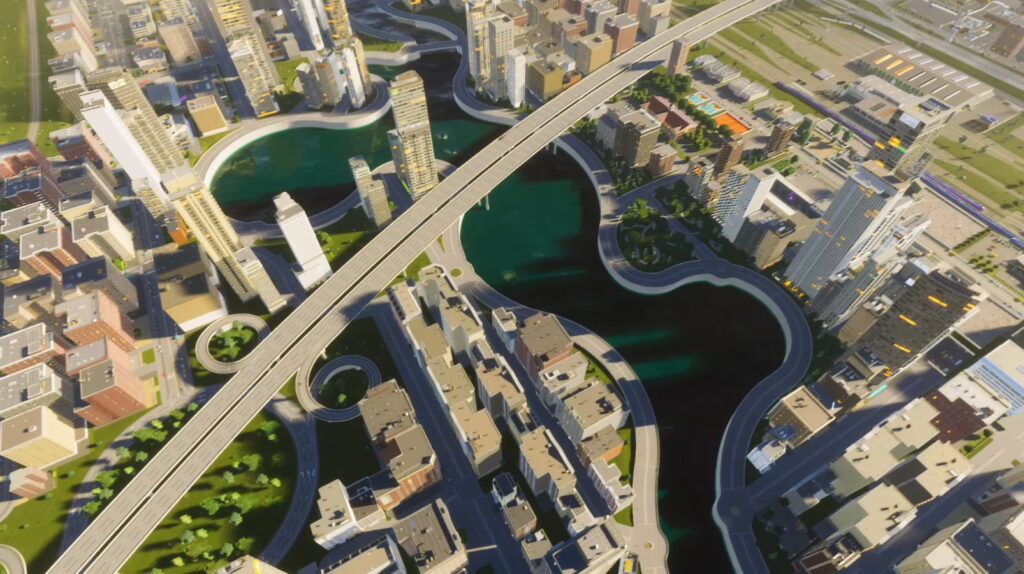
2: Urban Canvas Unveiled: Skylines II Gameplay
Now that we’ve dipped our toes into Skylines II’s world, let’s delve deeper into its gameplay mechanics. From city planning to citizen dynamics, this section explores the core elements that make Skylines II a captivating urban simulation.
City Building – Where Creativity Meets Strategy:
In Skylines II, your journey begins with an empty plot awaiting your touch. The canvas is yours – roads, zones, utilities – the essentials of city life. But this game is more than just constructing buildings; it’s about steering growth. Policies, tax rates, and ordinances become your tools to guide the city’s evolution, with each decision leaving an imprint on your metropolis.
Expansive Horizons and Population Dynamics:
One standout feature of Skylines II is its liberation from spatial constraints. The game grants you a staggering 441 tiles, transforming your realm into a sprawling metropolis. Compared to its predecessor’s limitations, Skylines II embraces a limitless horizon for population growth. Forget the 65,000-citizen cap – now your city can thrive with up to 2 billion currency units.
Seasons and City Dynamics:
Embracing the cyclical nature of life, Skylines II introduces weather and seasonal changes. Your city reacts to the ebb and flow of annual and diurnal cycles. Winter may bring snow-laden streets, while summer might usher in floods and tornadoes. Disaster management becomes a crucial aspect, with players strategically placing response facilities to safeguard their burgeoning metropolis.
Evolution of City Services:
Skylines II transcends mere construction – it’s about weaving a tapestry of services catering to every citizen’s needs. From essential safety services like police and fire stations to nuanced elements like telecommunications and welfare, the game introduces a spectrum of services. Upgrading existing facilities becomes pivotal, allowing for an organic expansion of your city’s capabilities.
Refined Transportation Experience:
Transportation in Skylines II transforms into a nuanced experience. Citizens, no longer relying solely on distance, intelligently navigate routes based on factors like cost, comfort, and agent preference. Police and fire stations can be district-assigned, enhancing response times. Transportation options are more flexible, enabling seamless importing and exporting between virtual cities.
The Birth of Skylines II:
Revealed on March 6, 2023, as part of the Paradox Announcement Show, Skylines II came with a promise of a richer, more immersive experience. The game’s development journey, though initially planned for a late 2020 release, encountered hurdles, leading to a delayed launch. The decision to use the Unity engine, like its predecessor, ensured a familiar yet enhanced gameplay experience.
Delayed Gratification and Enhanced Specifications:
As anticipation reached its peak, a twist in the tale unfolded. The simultaneous launch on both computers and consoles took a detour when, on September 28, 2023, Paradox Interactive announced a delay in the console versions. This decision, accompanied by an increase in PC version specifications, aimed at refining the gaming experience. Colossal Order’s commitment to quality underscored their willingness to prioritize player satisfaction over rushed releases.
Stay tuned for our next exploration into Skylines II as we unravel the intricacies of city services, creative expressions through modding, and the diverse sentiments from both critics and players.
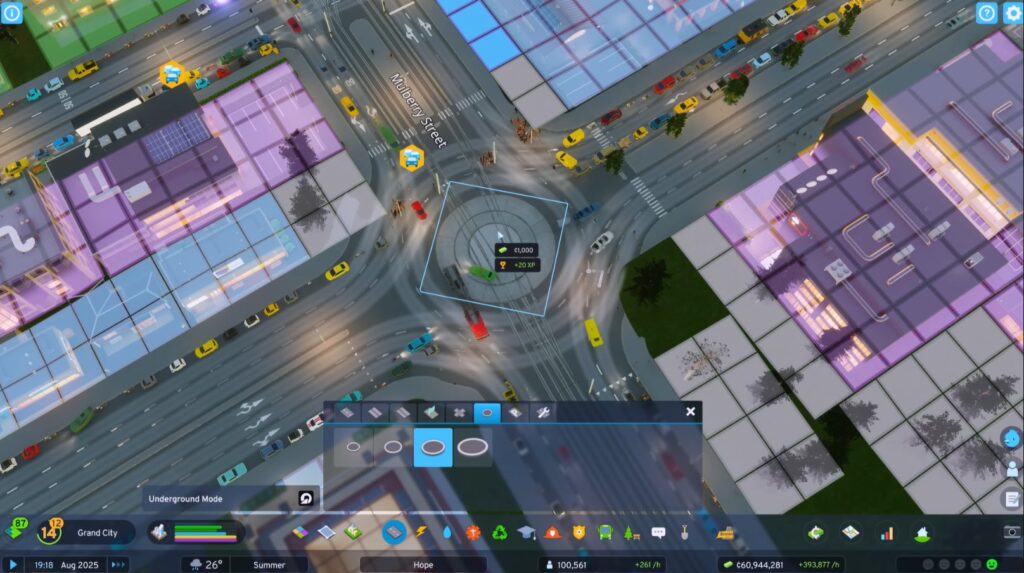
3: Skylines II – A Tapestry of City Services
In Skylines II, it’s not just about the towering skyscrapers; it’s about the intricate web of services that breathe life into your city. This section explores the evolution of city services, the refined transportation system, and the creative expressions facilitated by user modifications.
Weaving the Fabric of City Services:
Skylines II redefines city-building by emphasizing the importance of services. From fundamental safety measures like police and fire stations to the more nuanced realms of telecommunications and welfare, the game introduces a spectrum of services crucial for a thriving metropolis. Upgrading existing facilities becomes a strategic move, allowing for the organic expansion of your city’s capabilities.
Transportation Redefined:
Transportation isn’t just about moving from point A to B in Skylines II; it’s a nuanced experience. Citizens, no longer restricted by mere distance, intelligently navigate routes based on factors like cost, comfort, and personal preference. Police and fire stations can now be district-assigned, improving response times and adding a layer of realism to your city. The transportation options have become more flexible, enabling seamless importing and exporting between virtual cities.
Modifications and Creative Expression:
Skylines II, much like its predecessor, embraces the world of user modifications. However, a notable shift has occurred in the distribution method. While the original game relied on Steam Workshop, Skylines II opted for the Paradox Mods library, promoting cross-platform support. This change opens new avenues for modders, enabling them to alter behavior, introduce maps, and enhance assets. The announcement of building style packs from popular content creators adds an extra layer of excitement, injecting diverse creative elements into the Skylines II experience.
Critical Acclaim and Player Sentiments:
Upon release, Skylines II found itself under scrutiny from both critics and players. Metacritic reflected a mixed reception, with scores hovering around the mid-70s. The game’s success is not just measured by numbers but by the diverse sentiments it evokes. Some players appreciate the refined mechanics and thoughtful improvements, while others express concerns about performance issues and technical flaws. As with any creative endeavor, Skylines II sparks varied opinions, and its true impact may unfold over time.
Join us in the upcoming sections as we navigate through the dynamic city dynamics introduced by seasons, the economic intricacies of Skylines II, and the pulse of the virtual citizens who bring your metropolis to life.
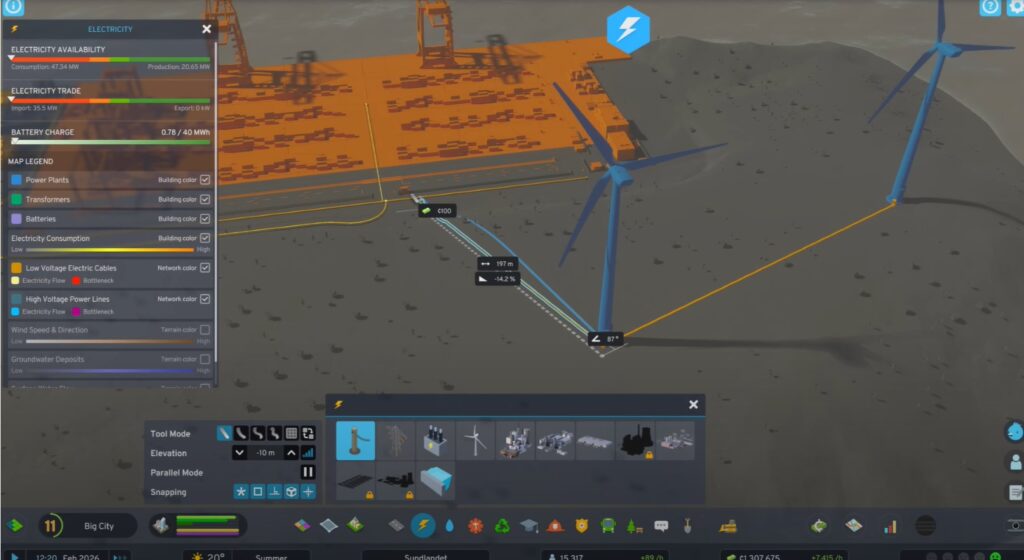
4: Navigating Seasons and Economic Currents in Skylines II
Welcome to the ever-changing world of Skylines II, where seasons bring a dynamic twist to city life, and economic currents flow through the intricate systems of your metropolis. In this section, we delve into the impact of seasons on city dynamics and the economic intricacies that challenge players to balance growth and financial stability.
Seasonal Dynamics:
Skylines II embraces the cyclical nature of life, embedding weather and seasonal changes into its core. Your city now reacts to the ebb and flow of annual and diurnal cycles. Winter may bring snow-laden streets, while summer might usher in floods and tornadoes. The introduction of seasonal dynamics adds a layer of realism, turning your city into a living entity that responds to the natural forces shaping its environment. Disaster management becomes a crucial aspect, requiring strategic placement of response facilities to safeguard your burgeoning metropolis.
Economic Challenges and Triumphs:
Beyond the aesthetic changes brought by seasons, Skylines II introduces intricate economic systems that challenge players to navigate the currents of financial stability. From managing budgets to optimizing tax rates, players must strike a delicate balance between encouraging growth and ensuring the city’s fiscal health. The game prompts thoughtful decision-making, as every policy adjustment resonates in the economic fabric of your virtual realm. Skylines II transforms the city-building experience into a dynamic economic simulation, offering both challenges and triumphs for players ready to embrace the financial intricacies of urban management.
As we journey through Skylines II, we’ll uncover more layers of its immersive gameplay. Stay tuned for insights into the lives of your virtual citizens, the art of balancing expansion, and the intricate details that make Skylines II a rich and dynamic city-building experience.

5: Evolution of Services and Transportation in Skylines II
In this final section, we explore the evolution of city services and transportation in Skylines II, showcasing how the game goes beyond simple infrastructure management to offer a holistic city-building experience.
Evolution of City Services:
Skylines II redefines the concept of city services, emphasizing the need for a comprehensive tapestry that caters to every citizen’s needs. From essential safety services like police and fire stations to nuanced elements like telecommunications and welfare, the game introduces a spectrum of services. What sets Skylines II apart is the ability to upgrade existing facilities, allowing for a more organic expansion of your city’s capabilities. This evolution mirrors the real-world growth of cities, where services adapt and improve to meet the changing needs of the population.
Transportation Refined:
Transportation in Skylines II is not just about laying down roads and railroads; it’s a nuanced experience that reflects the complexities of urban mobility. Citizens, no longer relying solely on distance, intelligently navigate routes based on factors like cost, comfort, and agent preference. Police and fire stations can be district-assigned, enhancing response times to emergencies. The transportation options are more flexible, allowing for seamless importing and exporting between virtual cities. Skylines II transforms transportation into an integral part of the city’s dynamics, adding layers of realism to the overall urban experience.
As we conclude our exploration of Skylines II, we’ve traveled from the foundational aspects of city building to the intricate details that breathe life into your metropolis. The game’s emphasis on realism, dynamic systems, and player-driven evolution makes it a standout in the city-building genre. Whether you’re a seasoned urban planner or a newcomer to virtual cityscapes, Skylines II offers a compelling and engaging journey into the heart of urban development. Happy building!

6: The Birth, Delay, and Modding Culture of Skylines II
In this final section, we delve into the intriguing backstory of Skylines II’s development, the unexpected delay, and the vibrant modding community that shapes the game’s ongoing narrative.
The Birth of Skylines II:
Unveiled on March 6, 2023, as part of the Paradox Announcement Show, Skylines II promised a richer, more immersive experience compared to its predecessor. Developed by Colossal Order, the game’s journey, though initially planned for a late 2020 release, encountered hurdles, leading to a delayed launch. The decision to stick with the Unity engine, like its predecessor, aimed at ensuring a familiar yet enhanced gameplay experience. Skylines II was born out of a commitment to delivering a game that not only met expectations but exceeded them.
Delayed Gratification and Enhanced Specifications:
As anticipation reached its peak, a twist in the tale unfolded. On September 28, 2023, Paradox Interactive announced a delay in the console versions of Skylines II. Simultaneously, an increase in PC version specifications was revealed, reflecting a dedication to refining the gaming experience. This decision, while disappointing to console gamers, underscored Colossal Order’s commitment to prioritizing player satisfaction over rushed releases. The emphasis on delayed gratification hinted at a game polished to meet the evolving standards of the gaming community.
Modifications and Creative Expression:
Skylines II, much like its predecessor, embraces the world of user modifications. However, a notable shift occurred in the distribution method. While the original game relied on Steam Workshop, Skylines II opted for the Paradox Mods library, promoting cross-platform support. This change opened new avenues for modders, enabling them to alter behavior, introduce maps, and enhance assets. The announcement of building style packs from popular content creators added an extra layer of excitement, fostering a dynamic and collaborative modding culture within the Skylines II community.
Critical Acclaim and Player Sentiments:
Upon release, Skylines II found itself under the scrutiny of both critics and players. Metacritic reflected a mixed reception, with scores hovering around the mid-70s. The game’s success was not unblemished, with performance concerns and technical issues drawing attention. However, amidst the critiques, players appreciated the improvements in mechanics, thoughtful development, and the potential for Skylines II to stand the test of time. As the gaming community navigates the evolving landscape of Skylines II, the game’s legacy continues to unfold.
In this journey through Skylines II, we’ve explored its evolution, design philosophy, challenges faced, and the vibrant culture that surrounds it. From the inception of your virtual city to its bustling evolution, Skylines II invites players to not only build but to become architects of thriving urban legacies. Happy city planning!
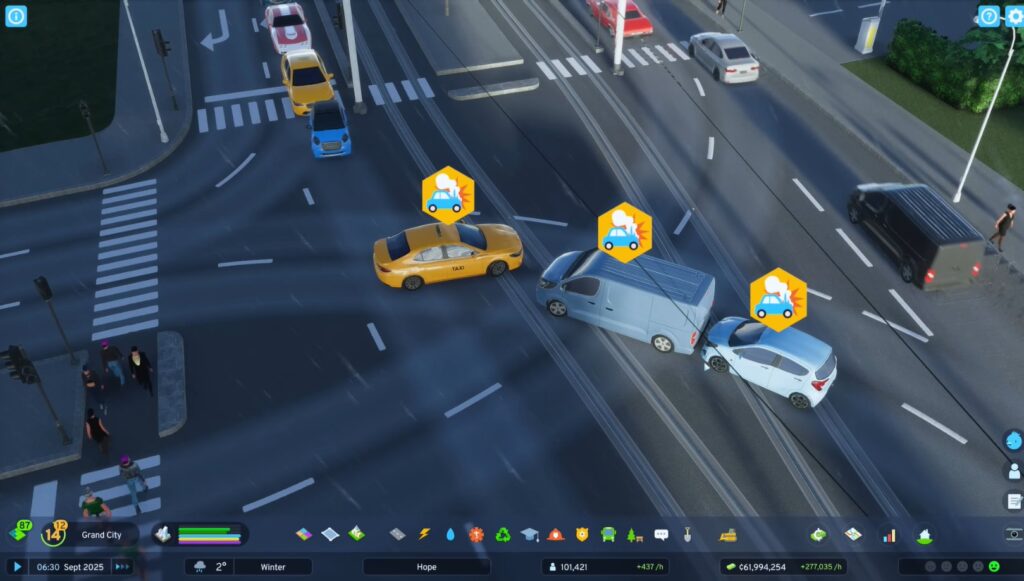
7: Navigating Skylines II – From Gameplay Dynamics to Player Reviews
Gameplay Dynamics:
Cities: Skylines II, released on October 24, 2023, marked a significant evolution in the city-building genre. Retaining the core essence of its predecessor, Skylines II introduced a myriad of improvements, enhancing the overall gaming experience. A standout feature was the refined traffic AI, offering players a more realistic and dynamic urban environment. The expansive city sizes, a hallmark of Skylines II, provided a vast canvas for creative expression, allowing players to craft intricate and sprawling metropolises.
Designing Your Realm:
The journey into Skylines II commences with a virtual plot of land awaiting the touch of creativity. From roads to zoning and utilities, every decision shapes the city’s growth. However, Skylines II transcends mere structural placement; it delves into the art of influencing growth. City policies, tax rates, and ordinances become tools in the hands of players, resonating in the fabric of their burgeoning metropolis. The game encourages a strategic approach, where each decision has a cascading effect on the city’s evolution.
From Nine Tiles to Expansive Horizons:
Skylines II liberates players from spatial constraints, offering a staggering 441 tiles for city development. This expansive canvas transforms realms into sprawling metropolises, dwarfing the predecessor’s limited 33.1776 km² of area. Each tile becomes a realm of possibilities, providing unparalleled scope and endless options for urban expansion. The game invites players to dream big and build even bigger, fostering a sense of freedom and creativity.
Population Dynamics and Infinite Potential:
In Skylines II, the simulated population isn’t a mere statistic; it’s a vibrant reflection of the city’s vitality. Unlike its predecessor’s limitations, Skylines II unleashes the potential for a population as vast as a player’s computer or console can handle. The once-capped 65,000 citizens are replaced with a limitless horizon, where each city can thrive with up to 2 billion currency units. Skylines II empowers players to nurture thriving, populous cities, reflecting the dynamic nature of urban life.
Seasons and City Dynamics:
Embracing the cyclical nature of life, Skylines II integrates weather and seasonal changes into its core gameplay. The city reacts to the ebb and flow of annual and diurnal cycles, adding a layer of realism. Winter may bring snow-laden streets, while summer ushers in floods and tornadoes. Disaster management becomes a crucial aspect, requiring players to strategically place response facilities to safeguard their evolving metropolis.
As players immerse themselves in the dynamic world of Skylines II, the game beckons with its intricate details and expansive possibilities. In the next section, we’ll delve into the evolution of city services and the refined transportation experience that Skylines II offers.
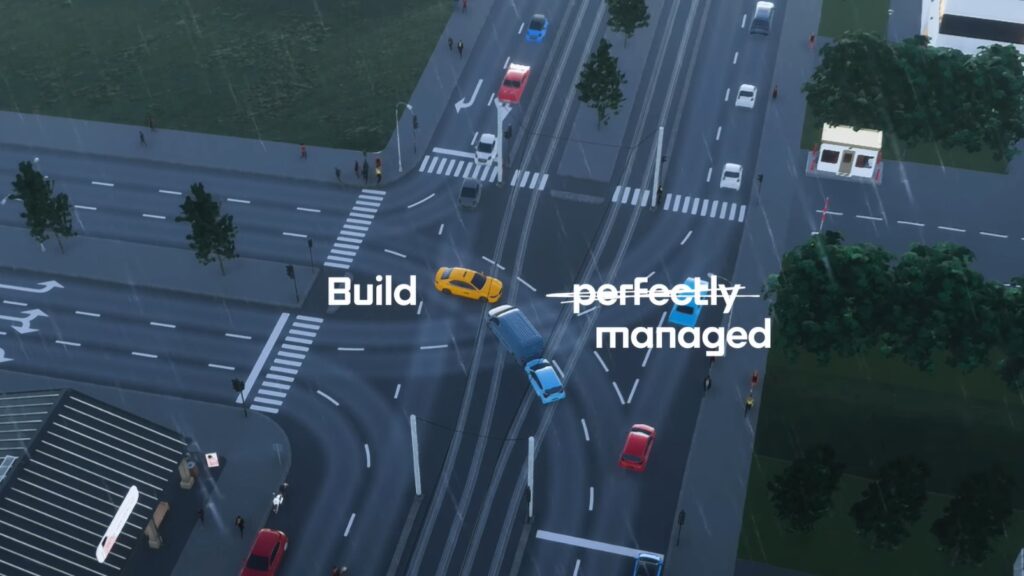
8: Evolving City Services and Refined Transportation
Evolution of City Services:
Skylines II goes beyond erecting buildings; it’s about weaving a tapestry of services that cater to every citizen’s needs. From essential safety services like police and fire stations to nuanced elements like telecommunications and welfare, the game introduces a spectrum of services. What sets Skylines II apart is its emphasis on upgrading existing facilities, allowing for an organic expansion of a city’s capabilities. This approach ensures a more nuanced and responsive city management experience.
Transportation Refined:
Skylines II transforms transportation into a nuanced experience. No longer are citizens reliant solely on distance; they intelligently navigate routes based on factors like cost, comfort, and personal preference. Police and fire stations can be district-assigned, enhancing response times and optimizing city services. The transportation options are more flexible, facilitating seamless importing and exporting between virtual cities. Skylines II challenges players to think strategically about the intricate web of city movement and connectivity.
The Birth of Skylines II:
Revealed on March 6, 2023, as part of the Paradox Announcement Show, Skylines II came with a promise of a richer, more immersive experience. The game’s development journey, initially slated for a late 2020 release, encountered hurdles, leading to a delayed launch. The decision to use the Unity engine, like its predecessor, ensured a familiar yet enhanced gameplay experience. Despite delays, Skylines II arrived with a wealth of improvements, captivating players with its expansive landscapes and intricate city dynamics.
Delayed Gratification and Enhanced Specifications:
As anticipation reached its peak, a twist in the tale unfolded. On September 28, 2023, Paradox Interactive announced a delay in the console versions, accompanied by an increase in PC version specifications. This decision aimed at refining the gaming experience, underlining Colossal Order’s commitment to prioritizing player satisfaction over rushed releases. Skylines II’s delayed gratification underscored its dedication to delivering a polished and immersive city-building extravaganza.
Modifications and Creative Expression:
Skylines II, much like its predecessor, embraces the world of user modifications. However, a notable shift occurred in the distribution method. While the original game relied on Steam Workshop, Skylines II opted for the Paradox Mods library, promoting cross-platform support. This change opened new avenues for modders, enabling them to alter behavior, introduce maps, and enhance assets. The announcement of building style packs from popular content creators added an extra layer of excitement, showcasing the collaborative and creative spirit within the Skylines II community.
Critical Acclaim and Player Sentiments:
Upon release, Skylines II faced scrutiny from both critics and players. Metacritic reflected a mixed reception, with scores hovering around the mid-70s. The game’s success and challenges were echoed in player sentiments, capturing a diverse range of experiences. As with any ambitious sequel, Skylines II navigated the delicate balance between innovation and meeting player expectations. In the following section, we’ll explore the intricacies of user reviews and the diverse perspectives that shape the Skylines II narrative.
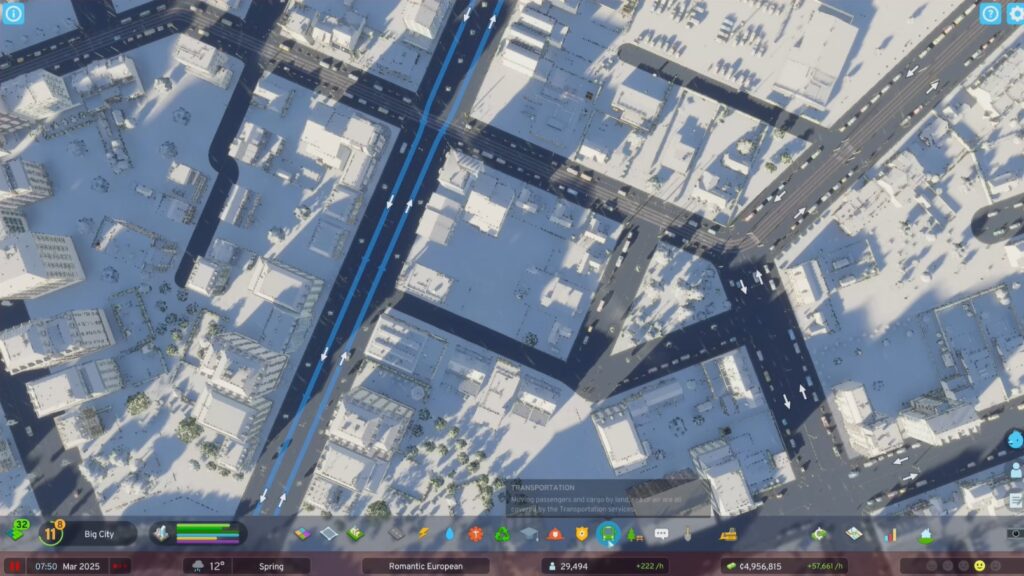
9: Player Perspectives and In-Depth Reviews
Unveiling Skylines II Through Player Eyes:
As Skylines II hit the gaming landscape, players worldwide embarked on their urban adventures, each experience a unique narrative woven into the virtual fabric of the game. This section delves into the diverse perspectives captured through player reviews and sentiments, providing a nuanced understanding of Skylines II’s reception.
Navigating the Mixed Waves of Metacritic:
Metacritic, a digital arena where critics and users converge, painted a mixed picture for Skylines II. Scores oscillated around the mid-70s, reflecting a spectrum of opinions. While some praised the game’s advancements, others pointed out areas of improvement. The dual nature of player reviews showcased the complexity of Skylines II’s impact on different gaming palates.
A Glimpse into User Reviews:
As players took to various platforms to share their Skylines II journey, a mosaic of opinions emerged. From the sheer joy of exploring expansive landscapes to grappling with performance concerns, the reviews mirrored the diversity of player expectations. It became evident that Skylines II, with its ambitious scope, evoked both admiration and constructive critique.
Nostalgia and Innovation:
For many, Skylines II became a nostalgic trip intertwined with innovations. Long-time players reminisced about the simplicity of its predecessor, even as they embraced the enhanced mechanics of the sequel. The delicate dance between nostalgia and innovation became a recurring theme, highlighting the challenge of satisfying both seasoned Skylines veterans and newcomers.
Performance Woes and Optimistic Hues:
A common thread in user reviews was the mention of performance issues. Some players encountered challenges with FPS and technical aspects, leading to a chorus of concerns. However, amidst the critique, a resilient optimism surfaced. Many players shared insights on tweaking settings and adapting to the evolving landscape of patches, projecting a belief in Skylines II’s potential for future refinement.
The Geopolitics of Urban Design:
Skylines II’s intricate balance of geopolitics and urban design prompted intriguing discussions. Players found themselves entangled in the web of policies, tax rates, and city ordinances, crafting not just cities but political landscapes within the game. This intersection of governance and city-building resonated with players seeking a deeper, more strategic gaming experience.
A Living, Breathing City:
One consistent praise in user reviews was Skylines II’s ability to create a living, breathing city. The simulated citizens, with their nuanced life paths, became a focal point of appreciation. From love stories to economic struggles, players reveled in the dynamic narratives unfolding within their meticulously crafted metropolises.
Closing Thoughts on Skylines II:
As we navigate through the diverse tapestry of player perspectives, it becomes evident that Skylines II is more than a sequel—it’s a dynamic canvas where player stories intersect with virtual urban landscapes. In the final section, we’ll explore the potential trajectory of Skylines II, considering the roadmap of updates, the impact of user feedback, and the enduring legacy it might carve in the city-building genre.
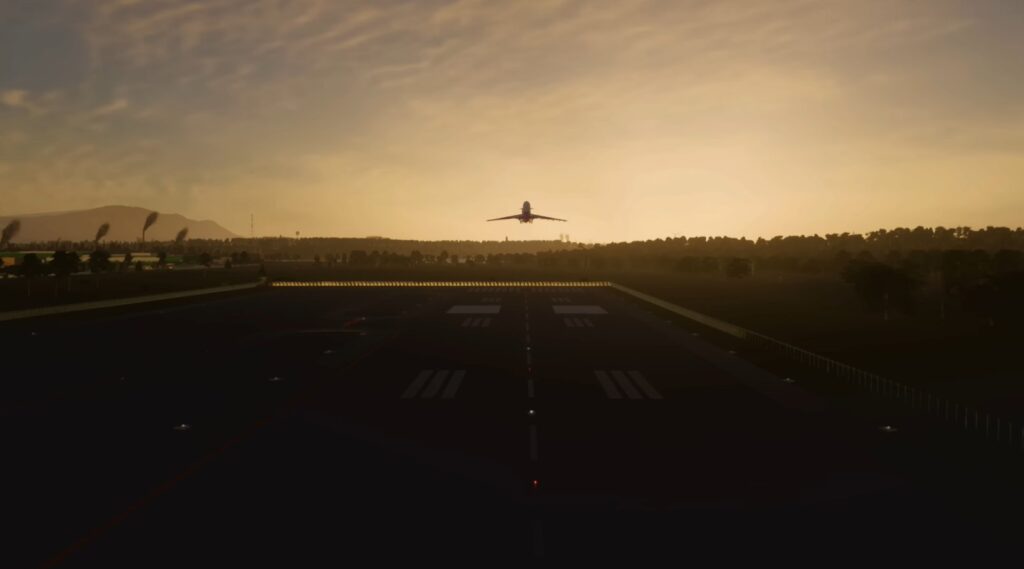
10: Skylines II – A Glimpse into the Future
Charting the Course Ahead:
As Cities: Skylines II continues to settle into the gaming ecosystem, anticipation lingers about its future trajectory. This section aims to provide insights into what lies ahead for Skylines II, considering potential updates, community engagement, and the enduring legacy it might forge.
Developer’s Pledge:
Colossal Order, the creative minds behind Skylines II, have a history of robust post-launch support. Past games from the studio received substantial updates, addressing player feedback and introducing new features. The community eagerly awaits a similar commitment to Skylines II’s evolution.
Patching the Canvas:
Acknowledging the initial performance concerns voiced by players, Colossal Order has hinted at a series of patches to enhance Skylines II’s gameplay experience. As history suggests, the first few patches could be crucial in addressing critical issues and refining the overall performance.
Community Collaboration:
Skylines II thrives on its vibrant community, known for contributing through mods, creative builds, and constructive feedback. The developers have expressed their commitment to fostering this collaborative spirit. The Paradox Mods library serves as a central hub, promoting cross-platform support and enabling modders to shape the Skylines II experience.
From Critique to Evolution:
User reviews, both critical and laudatory, play a pivotal role in Skylines II’s evolution. Developers often use player sentiments as a compass, guiding them toward areas that need improvement or expansion. The ongoing dialogue between the community and developers could pave the way for Skylines II to mature into a more refined city-building experience.
Legacy in the Genre:
As Skylines II navigates its journey, it leaves an indelible mark on the city-building genre. The game’s expansive landscapes, population dynamics, and intricate mechanics contribute to a legacy that extends beyond its release. Skylines II’s influence might shape the expectations of future city-building titles, setting a benchmark for realism and player engagement.
Closing Reflections:
Cities: Skylines II, with its blend of ambition and complexity, stands at the crossroads of gaming evolution. As the development team steers the course, and players continue to shape their urban narratives, the future of Skylines II remains an unfolding story. In our final section, we’ll reflect on the broader implications of Skylines II’s journey and its place in the rich tapestry of city-building games.

11: Skylines II – Navigating Challenges and Celebrating Achievements
Embracing Imperfections:
Every game embarks on a journey fraught with challenges, and Cities: Skylines II is no exception. This section delves into some of the challenges faced by Skylines II upon its release, how the community responded, and the notable achievements that have already set the game apart.
Launch Hurdles:
Skylines II faced its fair share of launch hurdles, with players expressing concerns about performance issues and technical glitches. The simultaneous release on both computers and consoles added an extra layer of complexity, leading to a delayed launch for the console versions. The transparency of the development team about these challenges reflects a commitment to delivering a polished gaming experience.
User Resilience and Adaptation:
In the face of initial challenges, the Skylines II community showcased resilience and adaptability. Players, armed with the spirit of problem-solving, experimented with settings, explored workarounds, and engaged in discussions to enhance their gaming experience. This collective effort underscored the strength of a dedicated player base.
Praise Amid Critique:
Skylines II’s reception, as depicted by reviews and player sentiments, paints a nuanced picture. While some critics highlighted performance concerns, many players praised the game’s advancements in city-building mechanics. The dynamic weather, population dynamics, and expanded city sizes garnered positive attention, indicating that Skylines II resonated with players on various fronts.
The Teeth Rendering Controversy:
One peculiar aspect that stirred discussions within the Skylines II community was the detailed rendering of citizens’ teeth, despite these details being rarely visible during gameplay. Developers clarified that this artistic choice didn’t significantly impact performance, sparking conversations about the intricate details game developers incorporate, even if not immediately apparent.
Sales Triumphs and Educational Recognition:
Beyond the realm of gameplay, Skylines II achieved significant milestones in sales, continuing the success story of its predecessor. The game’s adaptability extended beyond entertainment, finding a place in academic realms. Skylines II became a potential teaching tool, offering insights into real estate, environmental sciences, urban planning, and even journalism.
In Our Final Section:
As we conclude this exploration of Cities: Skylines II, our last section will delve into the overarching impact of the game. From its reception in the gaming community to its potential influence on the city-building genre, Skylines II’s journey unfolds in the next and final installment.
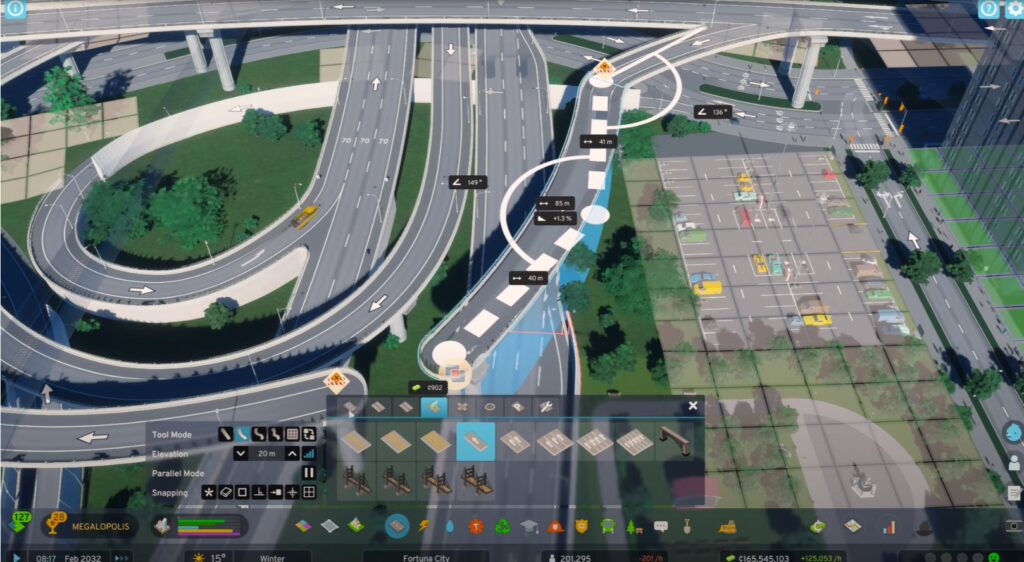
12: Skylines II – Impact and Future Horizons
Community Dynamics:
Cities: Skylines II isn’t just a game; it’s a vibrant community hub. This section sheds light on the dynamic interactions within the Skylines II community, highlighting how players collaborate, share insights, and contribute to the ever-evolving world of urban simulation.
User-Generated Content:
One of Skylines II’s defining features is its embrace of user-generated content. Unlike its predecessor’s reliance on Steam Workshop, Skylines II adopts the Paradox Mods library. This shift promotes cross-platform support, opening up new avenues for modders to enhance the Skylines experience. Building style packs from renowned content creators inject fresh creativity into the game, promising a diverse and expansive virtual landscape.
Critical Acclaim and Player Sentiments:
As Skylines II ventured into the gaming landscape, it faced the critical gaze of both reviewers and players. While Metacritic scores reflected a mixed reception, player sentiments varied widely. Some hailed it as a significant leap forward in the city-building genre, praising its intricate mechanics and expansive possibilities. Others echoed concerns about performance and technical aspects, emphasizing the need for continuous improvement.
Looking Ahead:
As Skylines II navigates its post-launch phase, the question arises: What lies ahead for this urban simulation masterpiece? This section speculates on potential future developments, considering the roadmap laid out by the developers. From anticipated patches addressing initial concerns to the promise of downloadable content expanding Skylines II’s horizons, the future seems ripe with possibilities.
Legacy in the Gaming Sphere:
Skylines II’s impact extends beyond its immediate player base. This section explores how Skylines II could influence the broader gaming landscape, shaping the expectations of city-building enthusiasts and setting a benchmark for future titles. The legacy of Skylines II, whether as a catalyst for innovation or a touchstone for community engagement, remains a topic of keen interest.
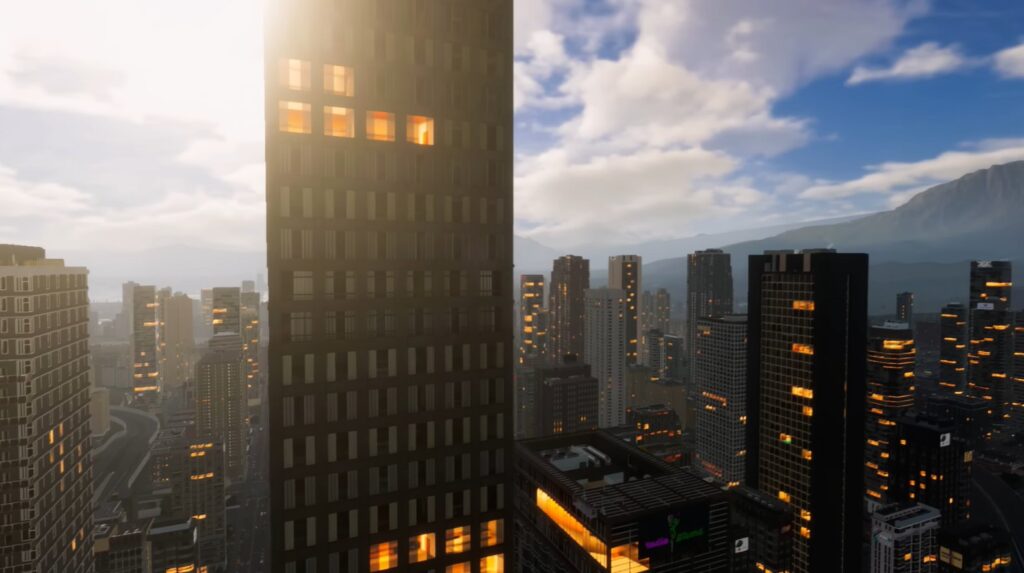
In Conclusion:
As we wrap up our journey through the realms of Cities: Skylines II, it’s evident that this game isn’t just about constructing virtual cities; it’s about weaving narratives, fostering communities, and pushing the boundaries of what a city-building simulator can achieve. Whether you’re a seasoned Skylines veteran or a newcomer to the genre, Skylines II invites you to partake in the ongoing saga of urban evolution.
In the final installment, we’ll synthesize the key takeaways from Skylines II’s venture, reflecting on its significance in the gaming landscape and the enduring allure of city-building simulations.

